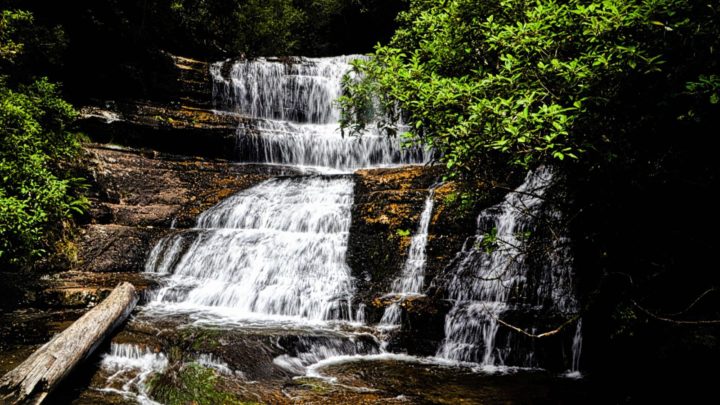‘The breathtaking views of the Falls Circuit in Tasmania’s Mount Field National Park’

The weather was still problematic, we were unsure just what to garb to don. The remnants of the cold front anchored off the coast were still there, but glimpses of blue sky foretold of change. My partner, Lorraine, was clearly in a quandary as to what to wear but, then again, women always appear unhappy with their attire for many reasons other than the weather.
Eventually we made it out of the motorhome, got our bearings and wandered off to Russell Falls, the most iconic of all Tasmania’s drops. Pausing often en route to glimpse the stream beneath the overhanging ferns and disturbing a pademelon or two, we managed to turn the 10-minute stroll into 15 minutes. Upon viewing the falls it was a case of ‘eyes wide open’ for Lorraine. Clearly this was one of the finest cascades she’d ever seen, with water flexing the leaflets of the greenery as it splashed its way to the river beneath in a series of three cascades. Little wonder it attracts tourists by the proverbial busload.

I explained there were other falls above and Lorraine was keen to move up the sturdy wooden staircase (a far cry from what I’d walked up years ago) and on to Horseshoe Falls, a much smaller affair that had but a mere trickle when I’d last seen it. on the day of our visit it was near its best, a photogenic spillway spread across a semicircle of rock, with few tourists to spoil the atmosphere and good light to boot.

Indeed most of the visitors came from the adjacent Tall Trees Walk, which is where we next headed, in amongst the giants that Tasmania is rightly famous for. Though somewhat below the Centurion (at 100.5 metres the world’s tallest hardwood further south in the Tahune area) the 79m (223 foot) giant, believed the tallest there, still required a neck strain to check out its uppermost branches, and it was one amongst many.
For every eucalyptus regnans standing though, there was an equivalent moss laden hulk on the forest floor, for only one in roughly 100 survive the rigours of nature to stand above all else.
They lay strewn like monstrous fiddlesticks, their crumbling bulk slowly being decomposed by all manner of plant life, one day to become the soil for a cousin to attempt another ascent to the heavens.
We pushed on, across the Lake Dobson Road and on to Lady Barron Falls, Lorraine marvelling at the ferns beside the route, how densely they grew around the rivulets that cropped up from time to time. She thought it was as good a bushwalk as she’d ever been on, rivalling even Lamington National Park.

After we’d photographed Lady Barron the trail turns sharply into reverse and follows the stream for another kilometre or so. Zig-zagging along, it crosses the stream more than once, its banks at their best by abandoned palm fronds and fungi scattered nearby in small clusters.
Then came another set of stairs in the direction of up, a couple of hundred or so, fairly new and beautifully constructed. That led us soon after to the road and the National Parks and Wildlife Service centre just down the road. At just under 3 hours it had been a memorable walk, surpassing even my expectations, and lunch in the motorhome was one of special memories recalled.








 Proudly Australian owned and operated
Proudly Australian owned and operated